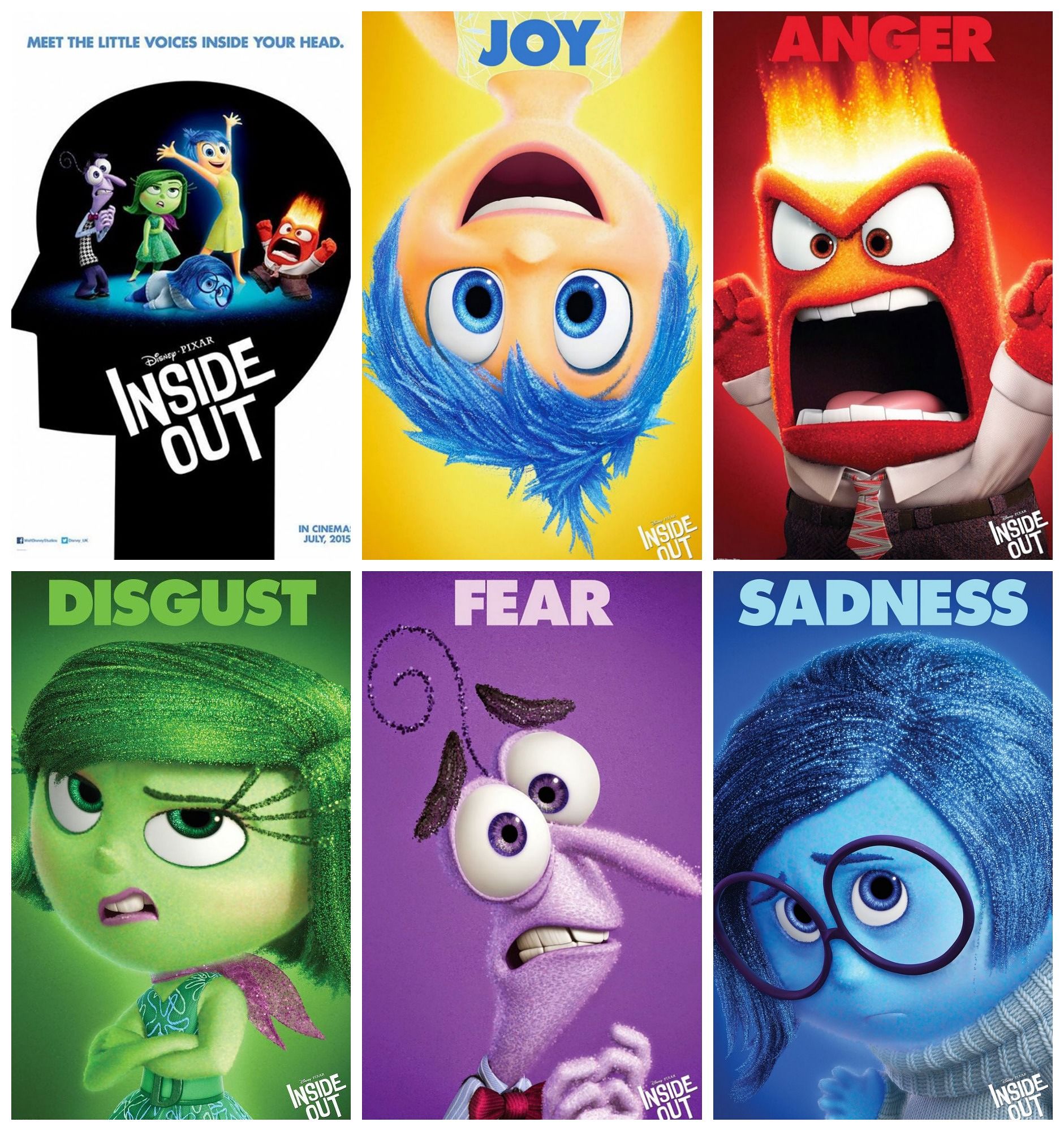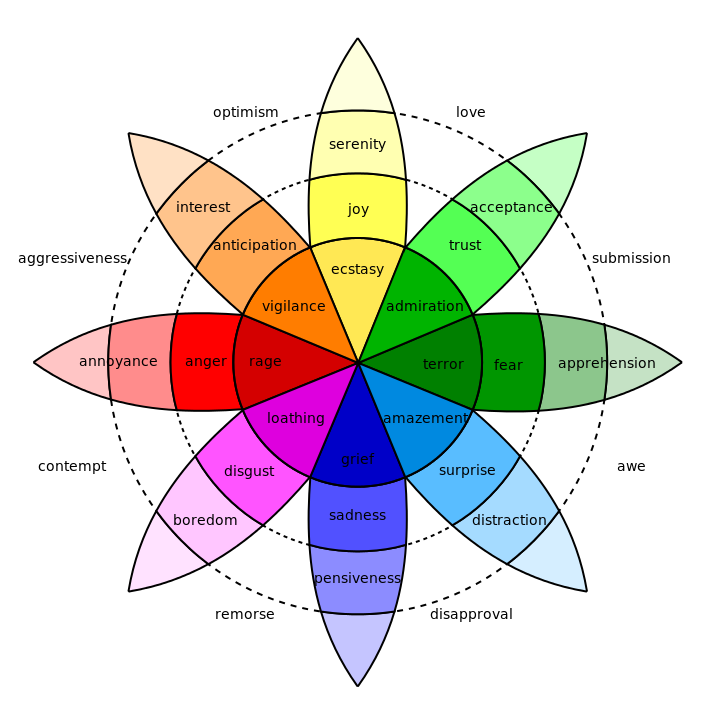Psychologically speaking we’re all quite similar aren’t we? Everybody has their own particular relationship to stress or fear or anger or whatever, but the same basic colours are there. They just get mixed differently.
Pixar reduced it down to five basics emotions for the film Inside Out: Joy, Anger, Disgust, Fear and Sadness. They had these little guys sitting at the control centre in each character’s brain. They drive the plot forward by figuring out what to do together.

The idea is grounded in science. Lots of serious psychologists have attempted to describe human experience as the interplay or combination of a basic core set of primary emotions. Just like colours, they can mix together to create new emotional states with their own distinct character.
The Plutchik wheel

Robert Plutchik (21 October 1927 – 29 April 2006) imagined there might be 8 basic emotions. His wheel demonstrates how you can arrive at secondary and tertiary emotions by watering them down. So Amazement can become Surprise and then Distraction when they’re dialled down in intensity.
It also looks like you can make Awe by combining Amazement and Terror. Nice right?
Well yes, until you notice that there are some important omissions. Where is pride or embarrassment? Where is relief? Also, is Love really a combination of Ecstasy and Admiration? Does Disgust really become Boredom when you make it less intense?
The PAD emotional state model
This was developed by Albert Mehrabian and James A. Russell (1974 and after). It imagines three axes against which it is possible to chart our emotional states.
PAD stands for Pleasure, Arousal and Dominance:
- Pleasure – displeasure: emotions can be either pleasurable or painful or anywhere in between
- Arousal – non arousal: emotions can be either exciting or calming or anywhere in between
- Dominance – Submissiveness: emotions are either controlling or controlled or anywhere in between
Hugo Lövheim proposed a visual model of this in 2012, linking each axes to a particular monoamine neurotransmitters: serotonin, dopamine and noradrenaline.

I was looking at this model with a colleague at work today. He laughed and said, “I think that might say more about Hugo than it does about emotion!” After all, there’s something about a cube shape that is so incredibly unemotional.
Reductive models
There’s a great deal to be said about both of these models. They both start with some basic underlying building blocks (primary colours or PAD axes) from which they can attempt to construct (or provide coverage of) the richness of human emotion. It’s tempting to think that if we can understand the atoms of emotion, then we can understand the bigger systems perhaps even in contexts that we’ve not even experienced.
It might be that these basic atoms of emotion are more biologically distinct or more universally recognisable – and therefore they can be thought of as primary truths in our emotional universe.
Cultural models
However, emotions are also culturally created. Even if we’re all subject to similar chemical signals flying around our bodies and brains. Even if we’re all subject to similar external stimuli too. We all have mothers and fathers, and siblings (or not), and colleagues and friends (or not).
Ultimately, the manner in which these things are experienced is infinitely variable based on cultural differences (within a country or a region or an industry…) – and too numerous to plot on 3 dimensions.
We transmit our understanding of emotions through language choices, including body language. And this is determined culturally.
Our best tools for interrogating this understanding has always been art, not science. A great play or film. A painting or a poem. These are the cultural models we reach for when wanting to understand emotion.
If we must catalogue emotions though, perhaps the best approach is to do it in relation to particular projects / activities that we get involved in as humans. A good example of this can be seen in the table below from Robinson, D. L. (2009). “Brain function, mental experience and personality”. The Netherlands Journal of Psychology. pp. 152–167.
| Kind of emotion | Positive emotions | Negative emotions |
|---|---|---|
| Related to Object Properties | Interest, curiosity | Alarm, panic |
| Attraction, desire, admiration | Aversion, disgust, revulsion | |
| Surprise, amusement | Indifference, familiarity, habituation | |
| Future Appraisal | Hope | Fear |
| Event-Related | Gratitude, thankfulness | Anger, rage |
| Joy, elation, triumph, jubilation | Sorrow, grief | |
| Relief | Frustration, disappointment | |
| Self-Appraisal | Pride in achievement, self-confidence, sociability | Embarrassment, shame, guilt, remorse |
| Social | Generosity | Avarice, greed, miserliness, envy, jealousy |
| Sympathy | Cruelty | |
| Cathected | Love | Hate |
